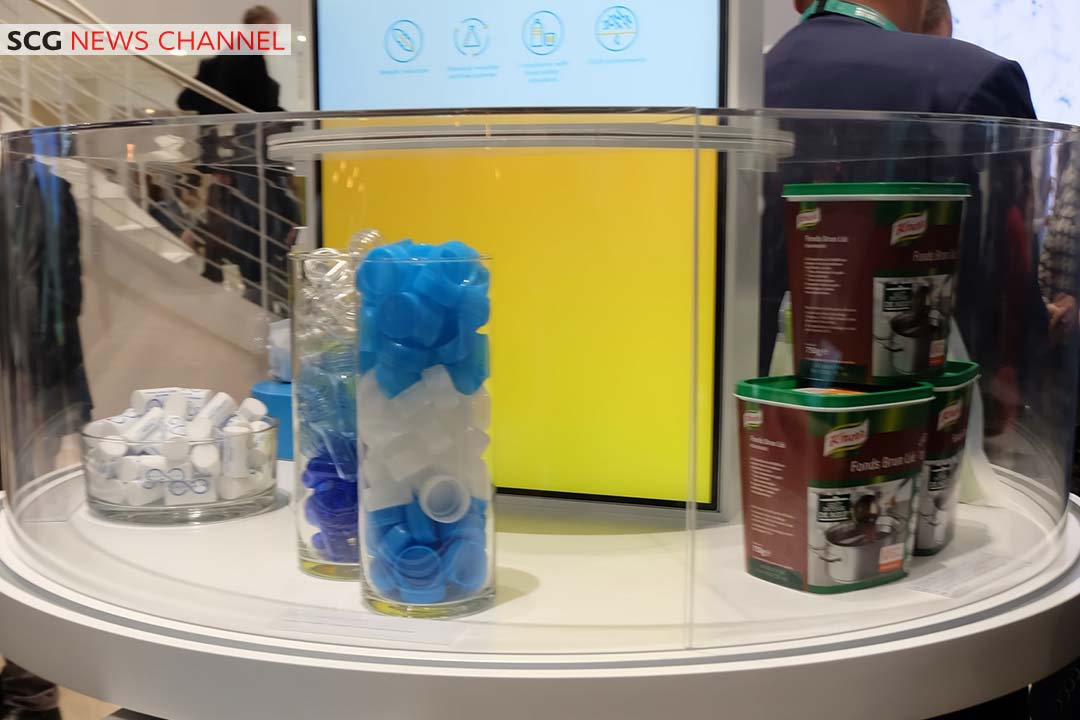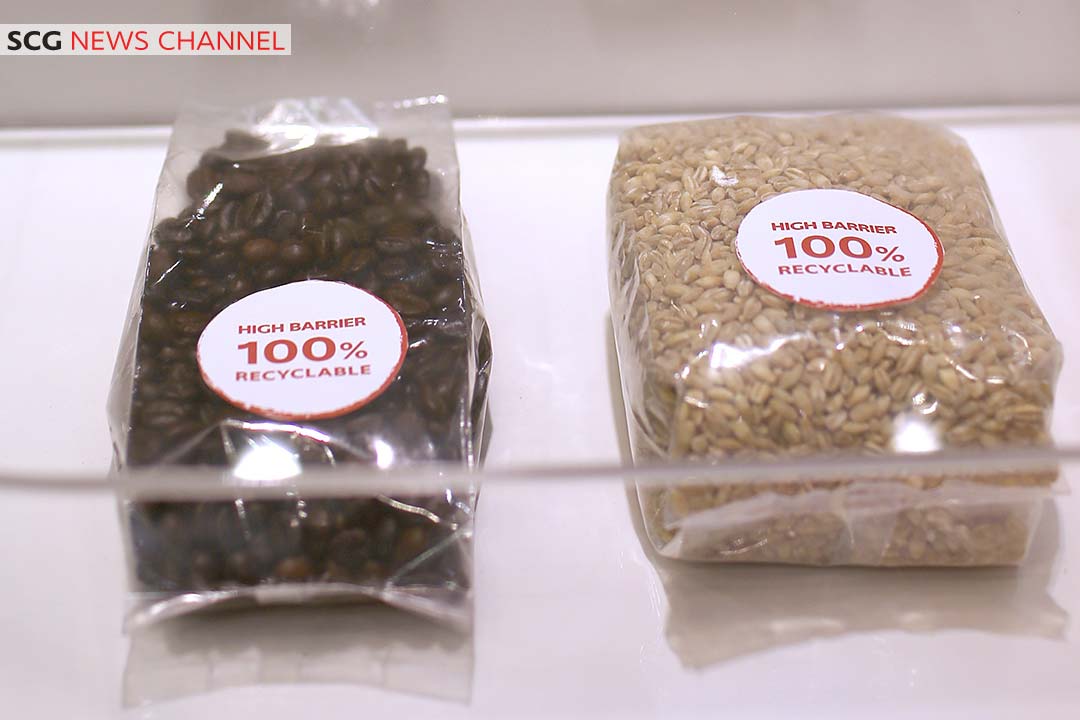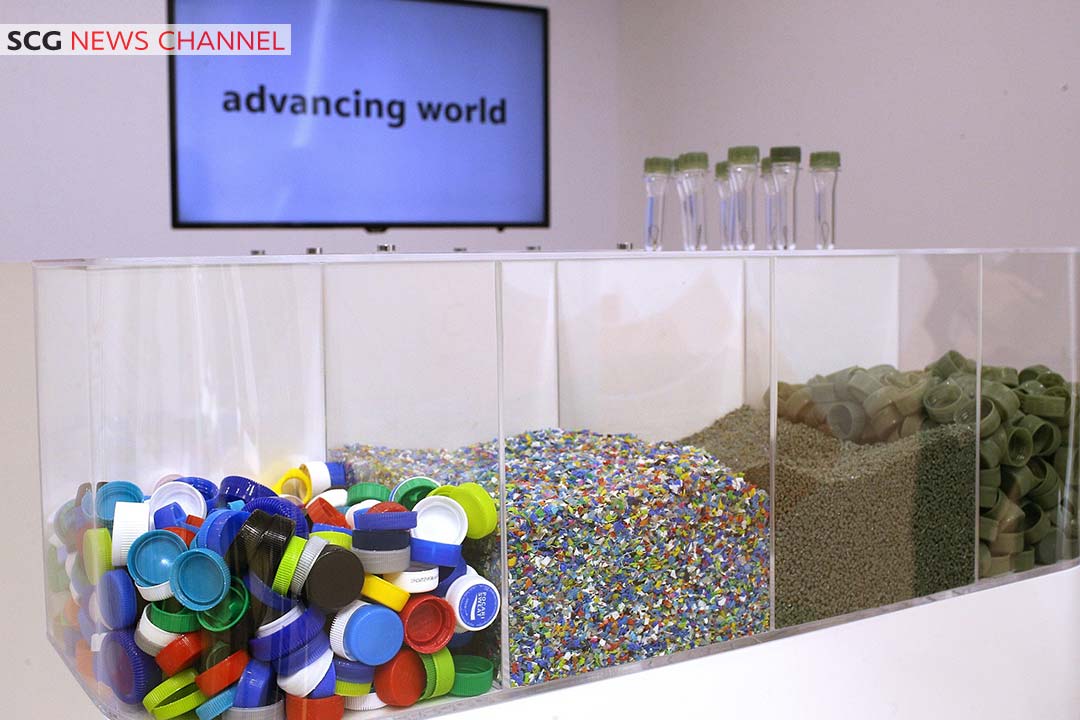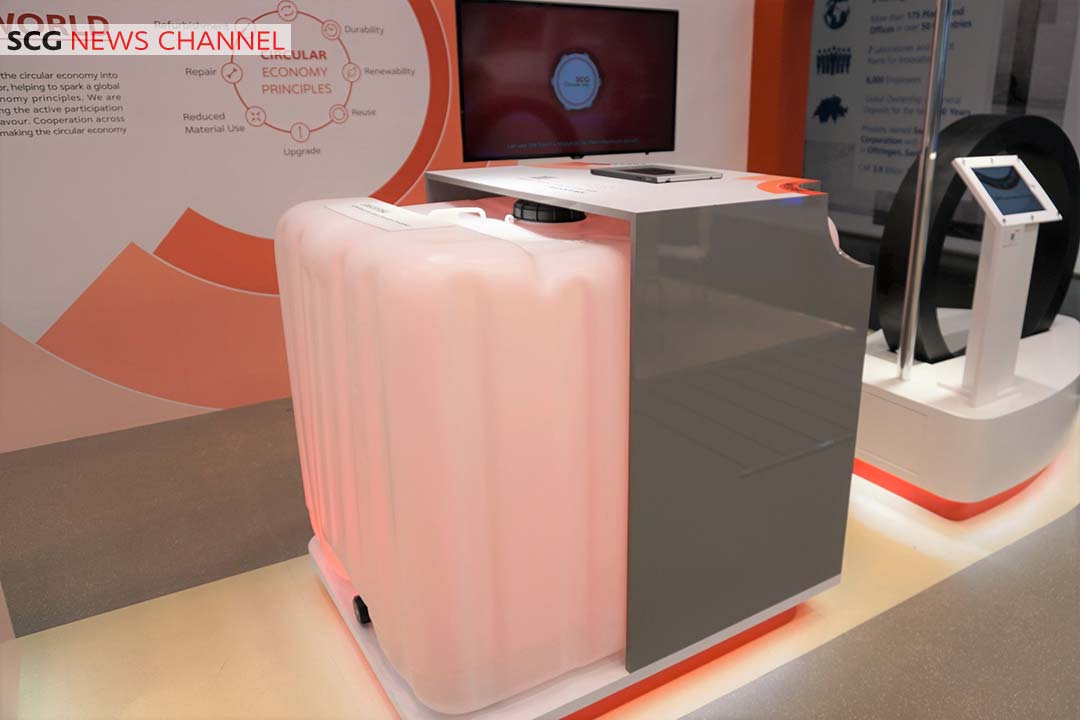Plastic is an extraordinary synthetic material. A natural byproduct of petroleum production, plastic can be used as a more efficient substitute for other materials because it is strong, durable, and lightweight. The properties of plastic can also be customized with synthesis and additives. Furthermore, plastic production uses far less resources and results in less environmental impact than other materials in the same quantity, thus making plastic the prevalent low cost material in a variety of industries and a part of our daily lives.
Nevertheless, without proper management, this wondrous material will inevitably become a waste crisis that has enormous impact on living things and the environment, especially marine life. The solution to this problem requires proper land waste management, which involves waste sorting and disposal along with the development of plastic technology that is environmentally conscious from the production process.
Recognizing this problem, the leading plastic manufacturers of the world recently convened to present their innovations at K2019, the world’s largest exhibition of plastic and rubber products, in Dusseldorf, Germany from October 16-23. This annual event draws the attention of many in the plastic industry and is looked to as the indicator of future trends in plastic production.
Over 3,300 exhibitionists from around the world participated in K2019, including SCG, one of the leaders in the petrochemical industry of Thailand and Southeast Asia. This year’s convention and innovation concept was “Plastic for Sustainability” and “Circular Economy,” both of which share the goal of developing plastics towards a sustainable and energy- and resource-efficient future by implementing changes at all stages, from the point of origin with new methods of production, to encouraging consumers to reuse plastic, all the way to post-consumer processing and recycling, in accordance with the principle of circular economy.
Five highlights among the plastic innovations for sustainability created by industry leaders in response to current consumer trends and presented at the convention include the following:
Improved recyclability
Plastics are in essence a 100% recyclable material. With proper post-consumer management and processing, it will not turn into waste that contaminates the environment. However, so far, to meet the needs of consumers the industry has developed plastic packaging by synthesizing and blending plastic with non-plastic materials, resulting in packaging that cannot be recycled, such as multi-layer film packaging that contains aluminum. Thus, at K2019, several companies, including Sabic, Borealis, Dow, and SCG, presented solutions to replace multi-layer packaging, especially mono-material packaging that is developed out of a single material so that it can be recycled. Another solution presented is improving the recyclability of plastics while retaining their properties.

Reducing production resources and increasing material efficiency
Plastics are ubiquitous in specialized industries, such as in lightweight and energy-efficient automotive parts, durable and corrosion-resistant construction materials, and various medical equipment. The current direction of plastic development to meet the needs of specialized industries is, therefore, aimed at increasing efficiency while reducing resources during production, in accordance to the principle of circular economy. For example, DuPont, which has expertise in developing lightweight material for automotive parts, showcased innovations in material technology that would fulfill the needs of future trends in the automotive industry, such as hybrid, electric, and automatic cars, developing F1 race cars and other types of vehicles in conjunction with various partner and client brands, such as Renault Sport Racing.
As a Thai brand, SCG also presented technology that will help increase efficiency and reduce resources used in production, namely SMX™ Technology which can be used in various applications, such as large chemical drums, flexible film packaging that is especially resistant to impact and perforation, and lightweight soda caps that use less material but have enhanced strength. In addition, SCG’s SMX™ Technology can also be used in the development of gas, mining, and high-pressure pipes in the future.

Turning waste into raw material
Because plastic is a recyclable material, it can be circulated into other raw materials for further use. Plastic recycling technology can be divided into the following categories.
- Mechanical recycling is the process of turning used plastic into pellets, which are then molded into new products for direct use. The plastic pellets produced through this process are called post-consumer recycled (PCR) plastic and can be blended with new plastic and/or additives to create properties desired for various applications like electronic parts, furniture, and higher-quality packaging for consumer products, such as plastic gallon jugs with 95% recycled PE from LyondellBasell, green tea bottles that use 100% recycled PET from Suntory, and stand-up pouches made with the full PE laminated solutions by Exxon, all of which feature the process of combining PCR with mono-materials.
- Feedstock recycling or chemical recycling is the process of turning plastic into raw material in the form of both gas and liquid. For example, Sabic and BASF have invented a process to recycle plastic through pyrolysis, which turns low-value or non-recyclable plastic waste that would otherwise be incinerated or disposed of in landfills into raw material that has been proven to be of equal quality to pre-consumer plastic and can be used for food packaging. In fact, several brands have already begun to use this material in their packaging, such as Knorr and Unilever’s Magnum bars.

Bioplastics and alternative materials
Invented for improved degradability, bioplastics are synthesized from various raw materials, such as corn, sugar cane, and tapioca flour. Because traditional plastic is a byproduct of petroleum, which is a non-renewable resource, innovations have been created to encourage the use of renewable feedstock in plastic production, such as bio-based feedstock and synthesizing carbon dioxide into polymer. The use and post-consumer processing of bioplastics are different from those of traditional recyclable plastic; consumers should inspect packaging and sort waste properly, as bioplastics can contaminate and cause damage to the recycling process.
Collaboration: Joining forces for sustainability
Cooperation between manufacturers and brand owners in creating innovations that answer the needs of both businesses and society is another emerging trend that could be seen at K2019. For example, BASF and Jaguar Land Rover collaborated on research into converting waste into automotive parts, while SCG and Betagro co-developed sturdy packaging material for chicken products that is resistant to tears and perforation from chicken bones. These are just two examples among many. Moreover, there were joint efforts among manufacturers, recyclers, brand owners, and other involved parties throughout the production chain in developing innovations in waste management to maximize utility. All this is an assurance that the plastic industry will grow alongside sustainability efforts, as exemplified by SCG collaborating with Dow to turn post-consumer plastic into pavement made from recycled plastic.
These five plastic industry trends for sustainability reflect the determination of industry players in solving environmental issues by focusing on recycling, reusing, and reducing resources in accordance with the principle of circular economy in order to create sustainability in plastics from the point of production all the way to facilitating post-consumer processes. Once manufacturers and brand owners have adjusted their habits, it’s now time for consumers like us to help the world change its behavior simply by starting with ourselves. #resourcemaximization #correctwastesorting #properdisposal in order to circulate resources and reduce the amount of plastic waste released into the environment.

 ดาวน์โหลดข่าว
ดาวน์โหลดข่าว